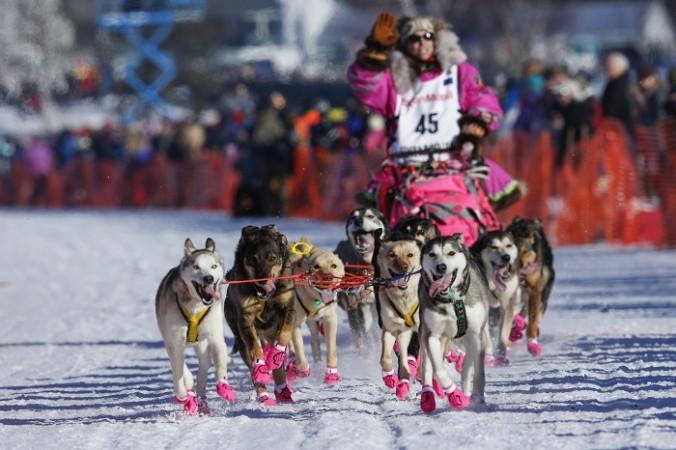
It is that time of the year, where the state of Alaska becomes the centre of attraction thanks to the Iditarod Trail Sled Dog Race, where the mushers and their dogs try to achieve the ultimate glory. A total of 72 mushers (the person who drives the sled) are set to participate this year and they will cover a staggering 1000 miles in extreme temperatures. It goes without saying that the Iditarod is the longest dog sled race in the world.
The competition always grabs the spotlight, with fans and media alike zoning in on the area to enjoy some of the most unique sights.
Here are five things you should know about the Iditarod Trail Sled Dog Race
Only a certain kind of breed of dogs allowed
This is a rule, which has to be strictly followed as the organisers of the Iditarod Trail Sled Dog Race do not want to include dogs, who may not be able to brave such temperatures in the trail. Dog breeds like Alaskan malamute, the Siberian husky and Alaskan husky are regularly seen in the race. Some of the sled dogs can maintain a speed of up to 12 miles per hour for a long time.
A lot of food is eaten by the stars of the race
With the race taking shape in extreme conditions, there is a serious need for the dogs to be constantly fed. They have to eat 10,000 to 12,000 calories a day. The mushers provide frozen food, which includes meat, fish and other protein diets too. It is at check points, where the dogs are given warm food, which helps control their body temperatures.
A physical and mental test of the highest order
It is one of those tough races in world, where the mushers and dogs have to be brave and undergo some extreme temperatures, including snow blizzards and minus temperatures. It tests the physical and mental conditions of both the mushers and dogs, but they come well prepared for the race as they understand the challenge that lies ahead.
Dog booties
One might think that they wear booties because of the extreme cold in this Iditarod race, but more than that it is the difficult terrain and surroundings that compel them to wear some protection. The mushers, as per the requirement of their dog, normally make the booties themselves and carry some extra as well, just in case.
Prize Money and an award for coming in last
The prize money for this year is yet to be determined, but the good thing about the race is that each and every musher, who completes the race are going to win a cash prize. Last year, the total prize money awarded was $793,008.
The Red Lantern is awarded to the team that finishes last and it is a badge of honour because it shows the perseverance and heart that the competitors had to show to finish this most difficult of races.

















